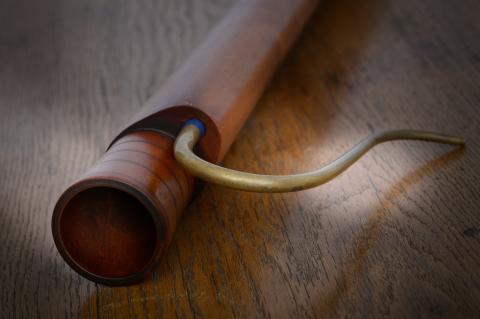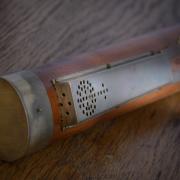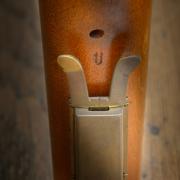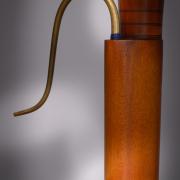The curtal is the extremely agile bass of the double reed family. Higher curtals did exist, but they were never as satisfying to play as the shawms, while the bass shawms gives a great sound but is hard to move around. Therefore, early on we find mixed ensembles with cornetts, shawms, sackbuts and a bass curtal on the lowest part. This seemingly was the favorite wind band combination for many decades.
Later, when all instruments started to compete with each other in playing 'alla bastarda' the curtal, in Italian named fagotto and in German dulcian, made the race second only to the viol. Composers like Castello, Marini, Frescobaldi, Salaverde or Bertoli wrote very challenging pieces at neck risking speed, often paired with cornetts or the newly invented violin. And also the concerti per fagotto by Antonio Vivaldi were written for this instrument and not for the French bassoon.
In my bassoonist's life I've bought and sold many curtals of many makers and all sizes, but this instrument of Graham and Maggie Lyndon-Jones is the best I've ever touched. It is very light and resonant and can be played very very fast. On top of that the sound is extremely flexible. It can be played with soft instruments and voices or in a large wind band and will always carry it's part!




